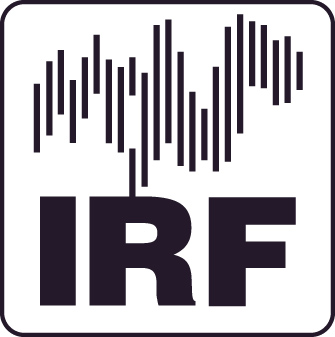

|
| Overview | ||||||
| Topical | ||||||
| Popular Science | ||||||
| Research | ||||||
|
||||||
| Observatory | ||||||
| Data | ||||||
| SEARCH | ||||||
| | ||||||
| IRF Kiruna | ||||||
| IRF Umeå | ||||||
| IRF Uppsala | ||||||
| IRF Lund | ||||||
|
MAP 
|
||||||
|
|

| |||||||||||
|
Phobos-Grunt (Artist\'s impression: IKI)
The Russian Phobos-Grunt spacecraft was launched together with its Chinese sub-satellite Yinghuo-1 towards Mars from the Baikonur Cosmodrome in Kazakhstan on Tuesday evening, 8 November 2011, at 21:16 CET. At present (9 November) the mission is experiencing some problems. If these are solved, the dual spacecraft is scheduled to arrive at Mars in October 2012. After insertion into orbit the two spacecraft will separate. Yinghuo-1 will stay on a highly elliptical orbit (800km x 80,000 km), whereas Phobos-Grunt will enter a more circular orbit in order to approach and land on the Martian moon Phobos.
The Swedish Institute for Space Physics (IRF) in Kiruna has provided three identical ion mass analysers for this mission. The Detector for Ions at Mars (DIM) is mounted on the main Phobos-Grunt spacecraft. The DIM sensor was developed and built at IRF, while the associated digital processing unit was built at the Russian Space Research Institute (IKI).
Yinghuo-1 carries a plasma package (Yinghuo Plasma Package, YPP) consisting of two ion mass analysers and an electron sensor. The package is a joint development between IRF and the National Space Science Center (NSSC) in China. IRF developed and built the ion mass analysers (YPP-i1 and YPP-i2), while NSSC has provided the associated digital processing units and the electron sensor. The Space Research Institute (IWF) in Graz, Austria, participates in the scientific aspects of the Yinghuo Plasma Package.
All three ion sensors will simultaneously investigate the interaction between the solar wind (a stream of charged particles from the sun) and the Martian atmosphere from different vantage points in space.
IRF already has the ASPERA-3 instrument orbiting Mars on the European spacecraft Mars Express. Once all of these instruments in place it will be the first time multi-point plasma measurements are done at Mars from orbiting spacecraft. Due to Yinghuo-1\'s elliptical orbit, the Yinghuo Plasma Package will explore the distant plasma tail of Mars - another first.
DIM (top) and the two YPP ion mass analysers, YPP-i1 and YPP-i2 (bottom). Photos: Swedish Institute of Space Physics, IRF
More information:
Web pages:
Photos and other media:
Updated 2011-11-09, webmaster*irf.se